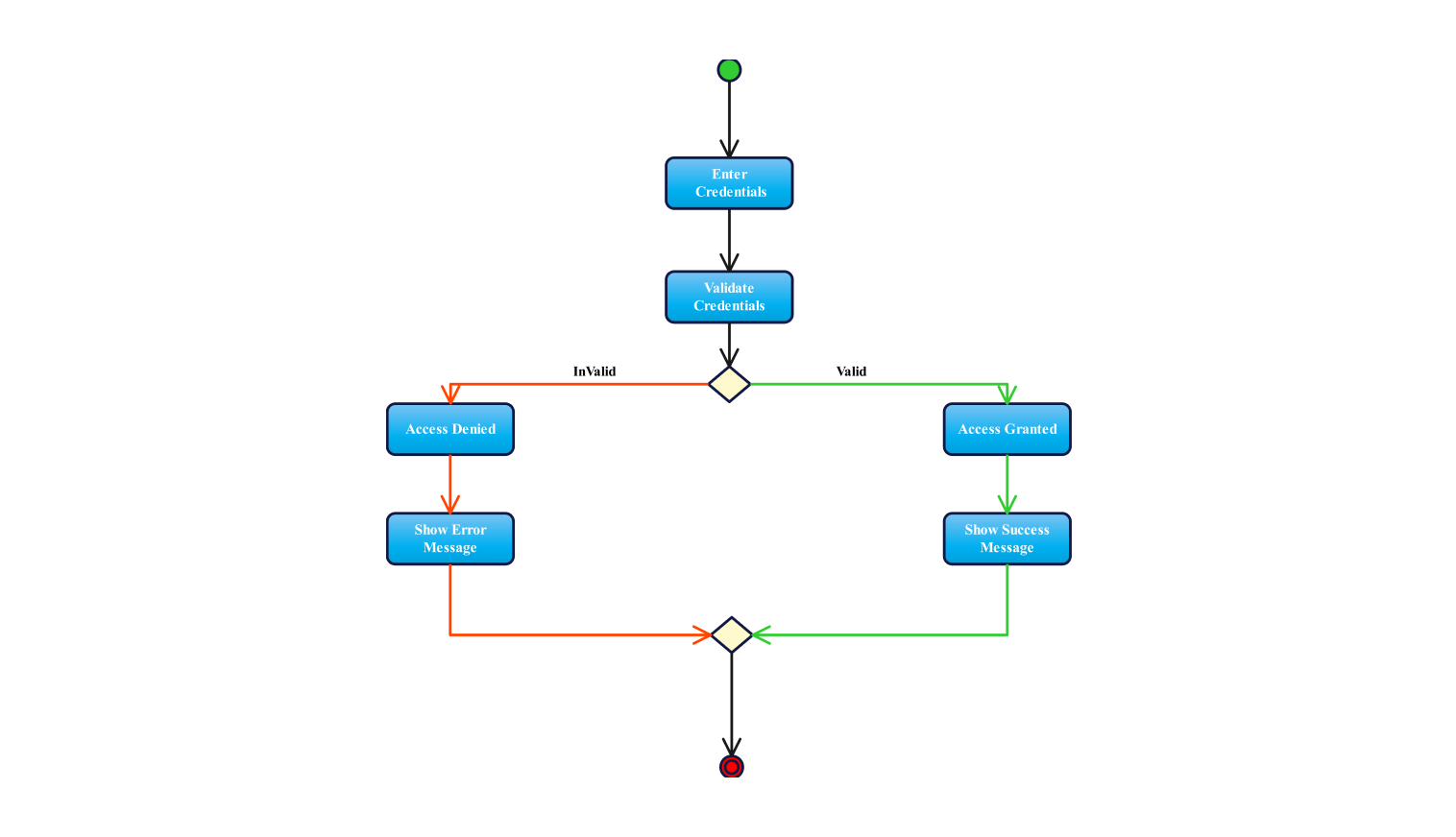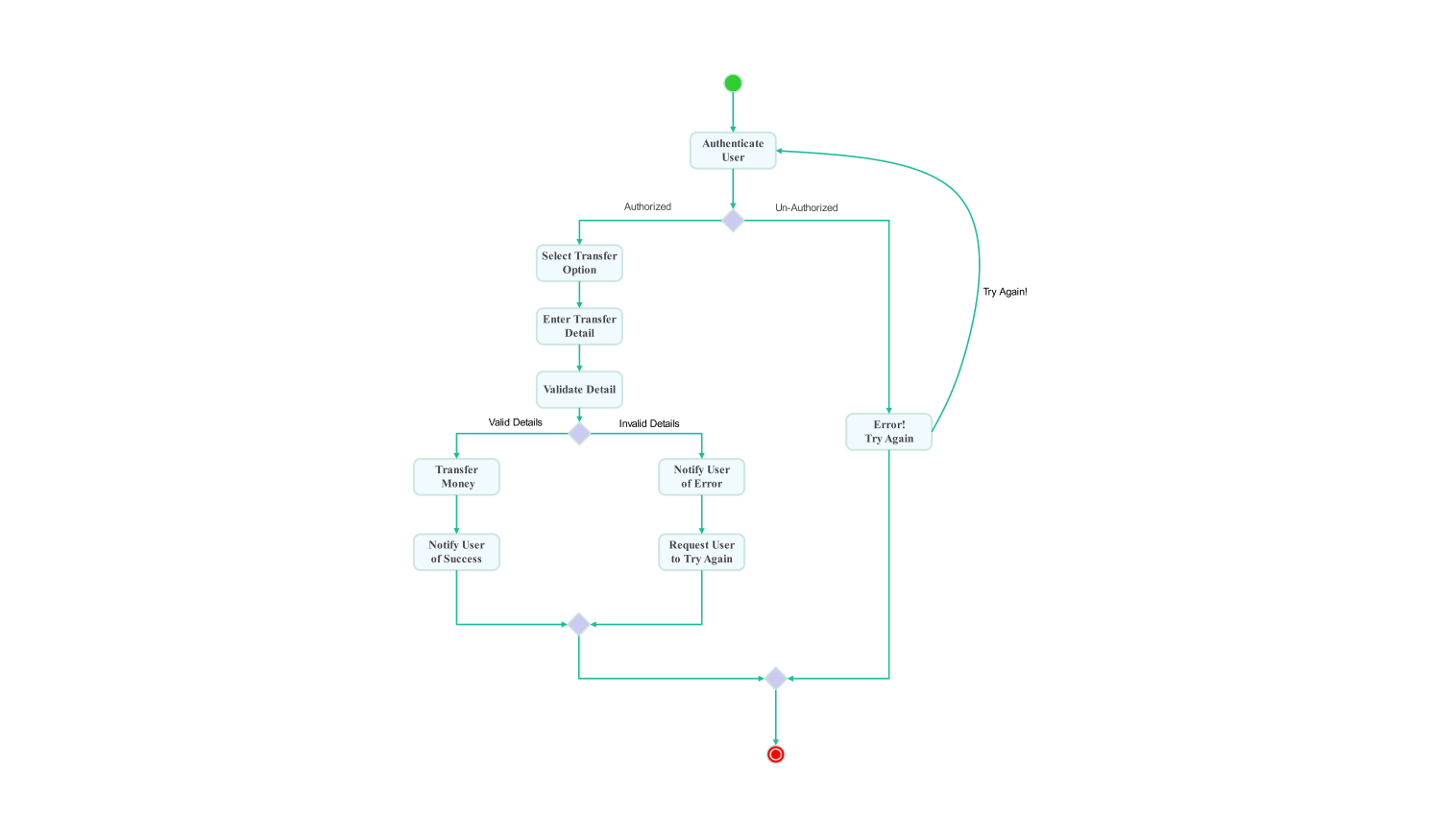- All templates
- Activity diagram templates
- Activity diagram project management
About this activity diagram for the project management system
The activity diagram for the project management system describes the flow of activities in a project management system. The first phase is project initiation. This step establishes the project's charter which will serve as the base of the entire project. It emphasizes the significance of a clear and intentional beginning to achieve a good end.
The following step is determining the scope, which is critical for specifying the project boundaries and deliverables. Defining the scope ensures that all team members have a common idea of what has to be accomplished, minimizing uncertainty and establishing a clear route for task allocation and execution.
Task assignment follows, with duties split among team members depending on their talents and experience. This stage is critical for effective resource management since it ensures that each job is assigned to the appropriate persons, increasing responsibility and simplifying the entire workflow within the project.
Monitoring progress is a crucial step for the project manager as it helps track the performance of the goals and objectives of the project completed over time.
The diagram then depicts a decision point: if an issue is discovered during monitoring, the system switches to resolving it. This demonstrates the system's proactive approach to problem resolution, which ensures that impediments are addressed immediately to reduce disruptions and keep the project on track for success.
If no problems are discovered, the project will proceed with regular monitoring. This process loop highlights the need for attention and ongoing oversight to ensure that the project stays on track and that any emergent difficulties are identified and resolved swiftly, hence maintaining a consistent workflow.
The next phase is to review project deliverables, which involves evaluating the project's outcomes against predetermined criteria. This review procedure is critical for quality assurance since it ensures that all tasks have been properly performed and that the project satisfies the agreed-upon criteria before formally closing or altering.
If the project is considered complete at the next decision point, it will enter the project closing phase. Closing the project entails wrapping up all activities, recording lessons learned, and formally terminating the project. This stage verifies that the project's goals have been achieved.
If the project is not completed, the system changes the plan. This stage entails reassessing the project's state, revising tasks, and reallocating resources to close any gaps. The iterative adjustment process is critical for ensuring that the project evolves and adapts to changing conditions.
Related templates
Get started with EdrawMax today
Create 210 types of diagrams online for free.
Draw a diagram free Draw a diagram free Draw a diagram free Draw a diagram free Draw a diagram free












